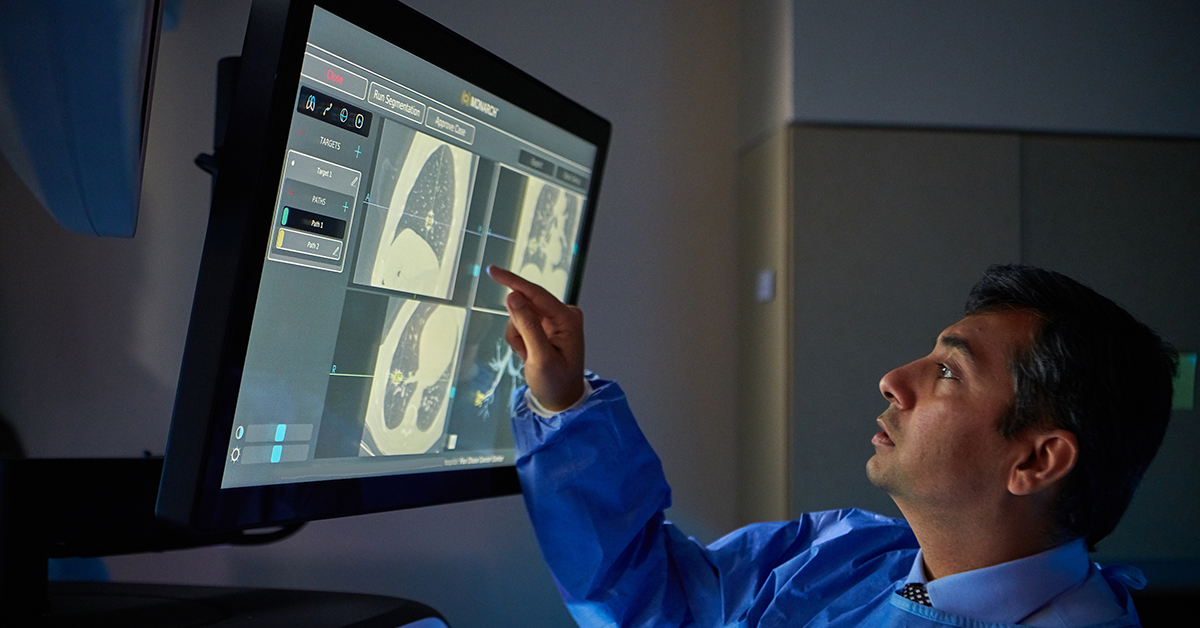
The Latest Innovation in Diagnosing Lung Cancer
-
A rapid, accurate diagnosis is always the goal when dealing with cancer. It is particularly important for lung cancer, which is the leading cause of cancer deaths. Cancerous nodules in the lungs can be small and found in hard-to-reach areas, making biopsies difficult and delaying diagnosis.
A newer robotic bronchoscopy platform is changing that. It allows our pulmonologists to more clearly see and reach lung nodules without invasive surgery.
“It allows us to reach places we never could before—it is a leap forward,” said Alan Haber, MD, FCCP, Chief of the Section of Pulmonary at Fox Chase Cancer Center.
How the Robotic Bronchoscope Works
“I tell people it’s similar to a GPS in your car,” explained Christopher Manley, MD, Director, Interventional Pulmonology at Fox Chase. “It’s a technology that tells us where we are in the lungs.”
Bronchoscopy is a method used to look inside the lungs and detect disease. It involves inserting a tube called an endoscope—with a light and camera attached to it—through the nose or mouth, down the throat, and into the lungs. During this procedure, doctors can take samples of tissue or mucus for testing in a laboratory.
Robotic-assisted bronchoscopy involves a similar procedure, except the tube and camera are attached to robotic arms (which are precisely controlled by a highly trained specialist). A hand-held controller is used to direct a small, flexible endoscope into the lung using computer-assisted navigation. The camera allows the physician to view a magnified image of the lung during the procedure, and the views are based on 3-D models of the patient’s own lung anatomy.
It’s an improved version of a tool that helps save lives.
“Previously, with a traditional bronchoscopy, we had good directions but not a good reach,” Manley said. “This newer technology gives us a lot better reach so we can get to nodules better and safely. We can do a biopsy with better control.”
Earlier Diagnosis
The robotic bronchoscope is helping doctors at Fox Chase deliver a diagnosis more quickly.
“I think some of the most important things we can do for our patients is make our diagnosis as early as possible, do the diagnosis and workup as safely as possible, and get patients into treatment as quickly as possible,” Manley said. “This robotic bronchoscope really changes the landscape of how lung nodules are evaluated and how we approach nodules that were previously very difficult to reach.”
The robotic bronchoscope is the latest in a series of significant improvements in the diagnosis of lung nodules over the last 15 years.
“For instance, we now travel through the airways to do biopsies instead of doing surgery to reach the lungs,” Manley said.” Being able to navigate airways routinely and safely and get answers quickly and accurately is important, and it’s why Fox Chase works to employ the latest technology for detecting the disease.”
